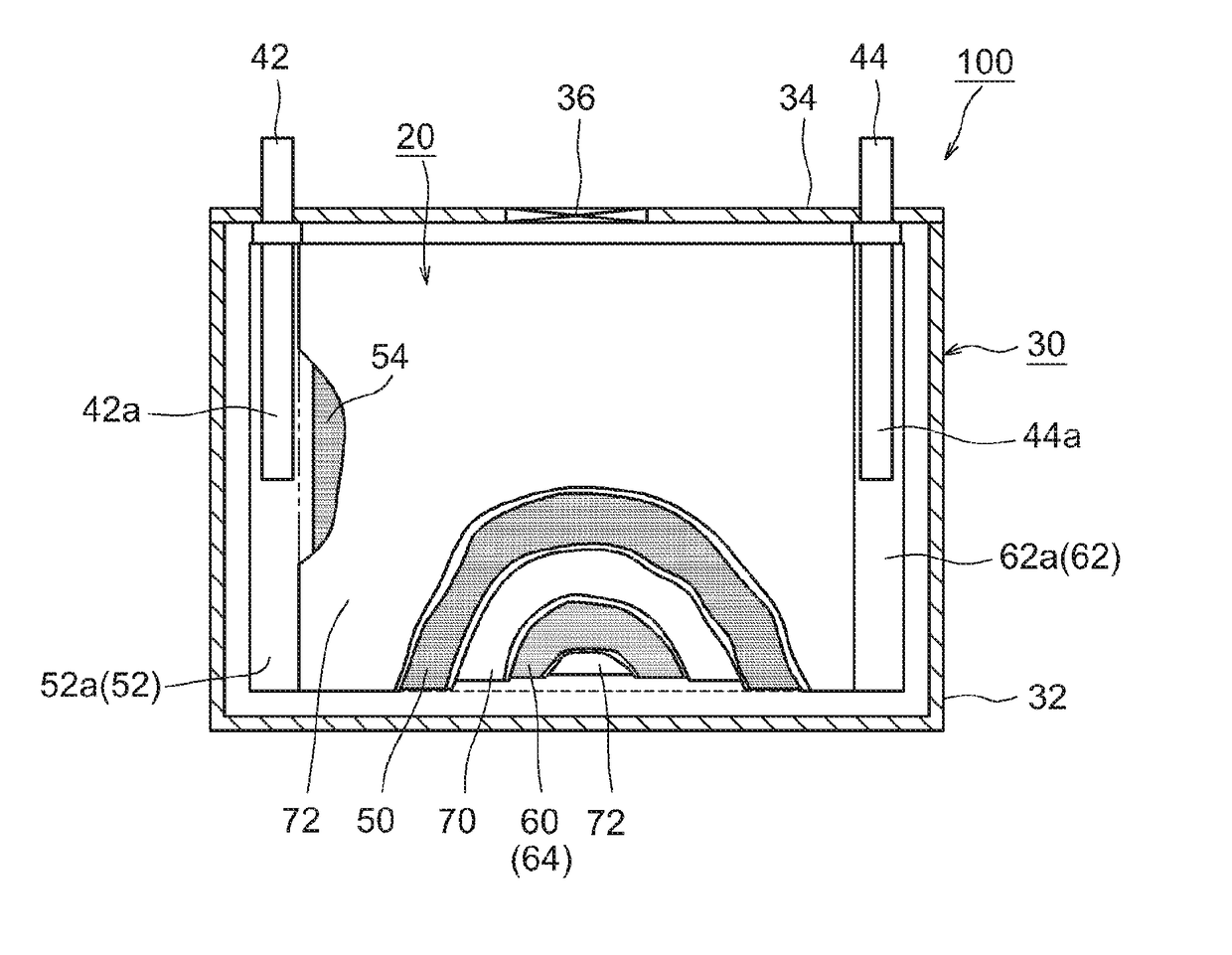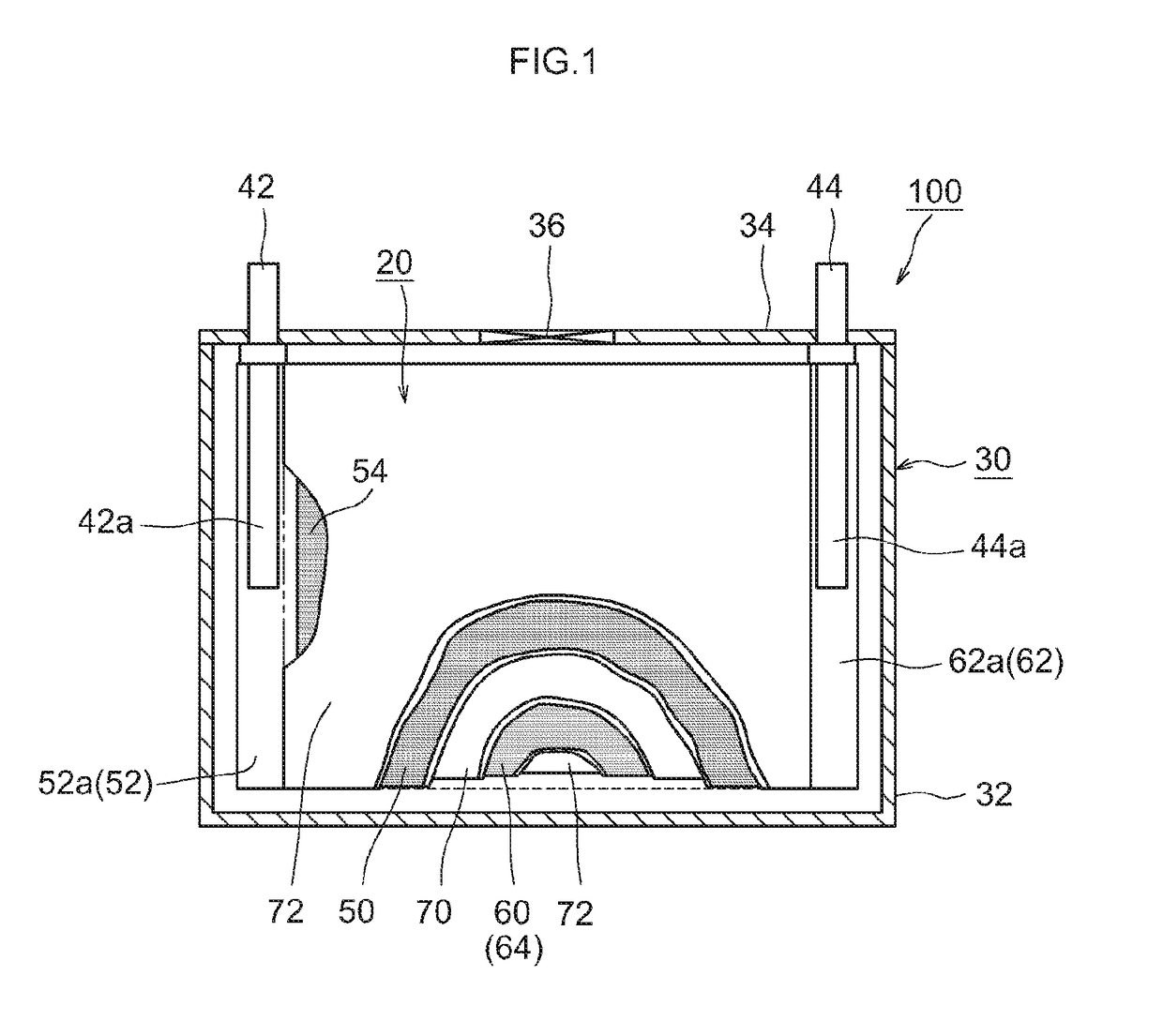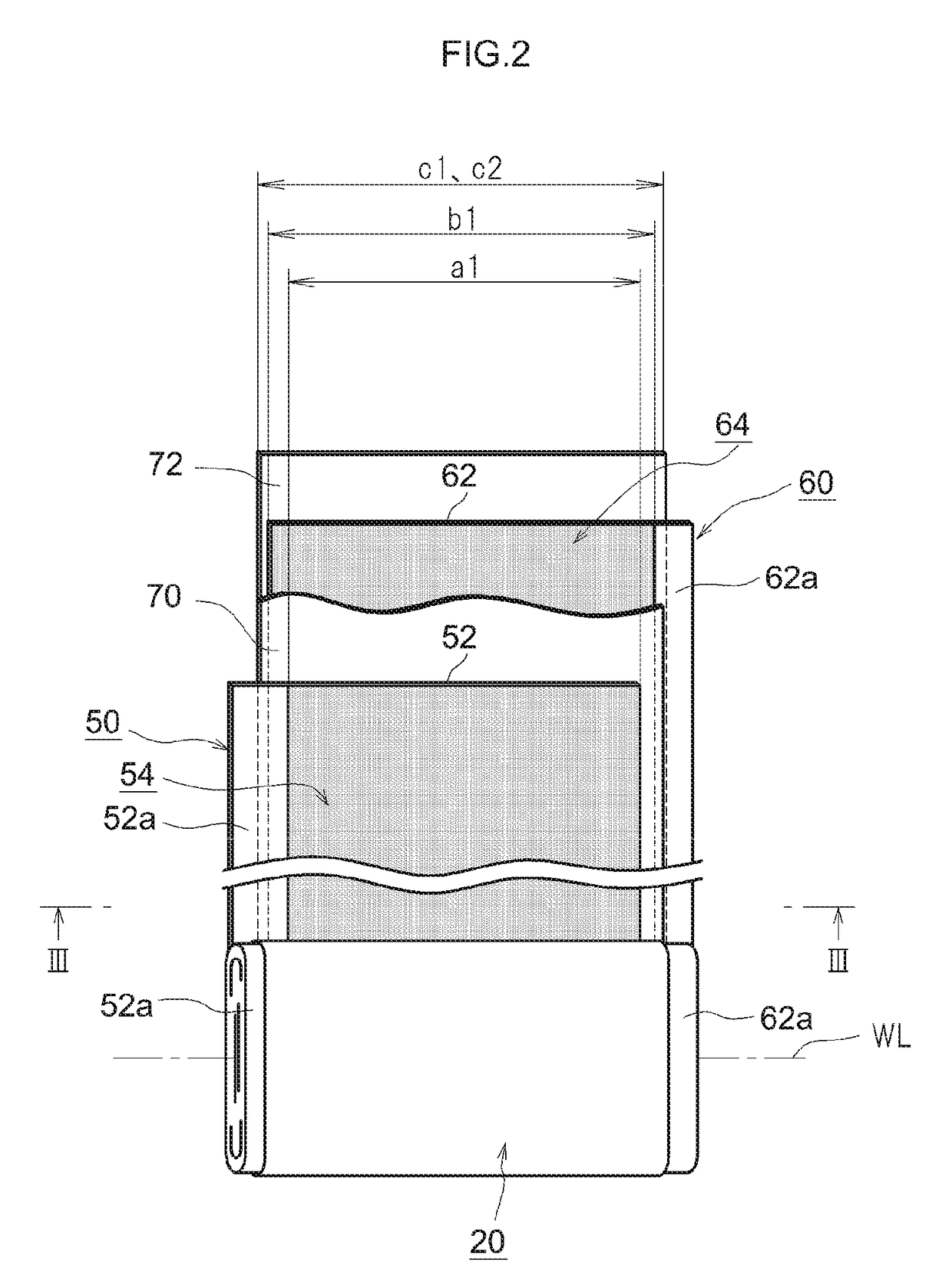Nonaqueous electrolyte secondary battery
a secondary battery and electrolyte technology, applied in secondary cells, battery service/maintenance, cell components, etc., can solve problems such as battery capacity deterioration, and achieve the effect of suppressing capacity deterioration
- Summary
- Abstract
- Description
- Claims
- Application Information
AI Technical Summary
Benefits of technology
Problems solved by technology
Method used
Image
Examples
first embodiment
[0019]FIG. 1 shows a lithium ion secondary battery 100 according to the present embodiment. As shown in FIG. 1, this lithium ion secondary battery 100 is provided with a wound electrode assembly 20 and a battery case 30. FIG. 2 is a diagram that shows the wound electrode assembly 20. FIG. 3 shows the III-III cross section in FIG. 2. As shown in FIGS. 1 and 2, the flat wound electrode assembly 20 of the lithium ion secondary battery 100 according to the present embodiment is housed, along with a liquid electrolyte (electrolyte solution) (not shown), in a flat rectangular battery case (i.e., an outer container) 30.
[0020]The battery case 30 is constituted of a box-shaped (i.e., a rectangular parallelepiped provided with a bottom) case main body 32 that has an opening at one end (corresponds to the upper end in the ordinary state in which the battery is used), and of a sealing plate (lid) 34 composed of a rectangular plate member that attaches to this opening and thereby closes the open...
second embodiment
[0065]In a second embodiment, a metal hydroxide (i.e., a metal compound having the hydroxide ion (OH−)) possessing the capacity to scavenge the phosphate ion through reaction with the OH group is used as the phosphate ion scavenger. A description of the other features is omitted here since they are the same as in the first embodiment.
[0066]
[0067]Any metal hydroxide that has a scavenging function through reaction of the phosphate ion with the OH group (chemical bonding) can be used without particular limitation as the metal hydroxide (typically a particulate) used as the phosphate ion scavenger. The metal constituent in the metal hydroxide can be exemplified by aluminum, iron, magnesium, calcium, manganese, copper, zinc, and so forth. Aluminum and iron are typical examples. The metal hydroxide can be specifically exemplified by aluminum hydroxide (Al(OH)3), iron hydroxide (Fe(OH)2), magnesium hydroxide (Mg(OH)2), calcium hydroxide (Ca(OH)2), manganese hydroxide (Mn(OH)2), copper hydr...
third embodiment
[0070]In the third embodiment, a layer compound having the capacity to scavenge the phosphate ion through the incorporation (insertion) of the phosphate ion into an interlayer region is used as the phosphate ion scavenger. A description of the other features is omitted here since they are the same as in the first embodiment.
[0071]
[0072]Any layer compound that has a scavenging function in which the phosphate ion is incorporated into an interlayer region can be used without particular limitation as the layer compound (typically a particulate) used as the phosphate ion scavenger. It can be, for example, a layered double hydroxide (hydrotalcite) given by the following general formula (II).
[M2+1-aM3+a(OH)2](An−)a / n.bH2O (II)
[0073]Here, M2+ represents a divalent metal ion; M3+ represents a trivalent metal ion; and An− represents an n-valent anion. a is in the range 0.05≦a≦0.34 and b is in the range 0.1≦b≦0.7.
[0074]The M2+ in general formula (II) can be exemplified by one or two or more o...
PUM
| Property | Measurement | Unit |
|---|---|---|
| thickness | aaaaa | aaaaa |
| surface area | aaaaa | aaaaa |
| total mass | aaaaa | aaaaa |
Abstract
Description
Claims
Application Information
 Login to View More
Login to View More - R&D
- Intellectual Property
- Life Sciences
- Materials
- Tech Scout
- Unparalleled Data Quality
- Higher Quality Content
- 60% Fewer Hallucinations
Browse by: Latest US Patents, China's latest patents, Technical Efficacy Thesaurus, Application Domain, Technology Topic, Popular Technical Reports.
© 2025 PatSnap. All rights reserved.Legal|Privacy policy|Modern Slavery Act Transparency Statement|Sitemap|About US| Contact US: help@patsnap.com



